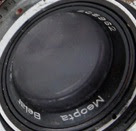So, you've set up a blog, invested in some quality WordPress premium themes to make it look amazing, and now you're ready to add some images. Adding images to a blog post is quite simple; adding quality images, however, is something else altogether.
Cell Phone Cameras
With the advent of cell phone cameras, suddenly everyone's a photographer. Whether it's blogs or social media pages, tweets or whatever, you can't swing a run-on sentence without hitting a camera-phone pic. What's wrong with that? A picture paints a thousand words, doesn't it? Exactly! And if you post a fuzzy, poor quality cell phone picture, the word that's going to come across loud and clear is amateur!
Poor Resolution
Cell phone cameras are great; you can take candid shots and send them out to friends and family almost instantly. These images are great for viewing in the window of a cell phone, but probably won't look as good blown up on a large computer screen. Technology is improving all the time, but by and large, most cell phone cameras have poor resolution and not a lot of great features.
Why More Resolution is Better
Your photos should have at least 5 megapixels of resolution, and 10 is even better. While some will argue that you don't need so much resolution unless you intend to blow your photos up into posters, the added resolution allows you to crop to your heart's desire. If you start with a 10 megapixel photo and crop out 50 percent of it, what remains is a basically a 5 megapixel photo. You might decide you only want one face out of a whole crowd, and starting with higher resolution will allow you to crop it out and enlarge it and still have a decent photo.

Crop, Crop, Crop Your Photos
Cropping sets the professional apart from the amateur. In professional artwork, photos are seldom used as they are taken. Don't be afraid to crop out the extraneous detail. Cropping a photo puts more emphasis on the subject, and allows you to frame it more clearly. Cropping also allows you to get rid of that extra arm, shoulder, or half a person on the edge of the photo. Done artistically, cropping can also make your photos look more edgy and modern. Another consideration is cropping to fit the layout of your WordPress theme where you want to post the image.
Adjust the Lighting
Whether you use a professional program or simply the software that came with your camera, you should always adjust lighting levels, brightness, contrast, hue and saturation. Even in "auto" mode, most point and shoot camera photos will need light and color adjustments for optimal image results. Take some time and play with the results. Changing the hue can give your image a cooler or warmer look, and increasing the saturation can make the colors pop.
Bag the Flash
Use flash sparingly. A good camera will take photos quite well without a flash. Using flash tends to white out the picture. Dark photos can be lightened; the information is still there in the darkness. Black is rarely truly black. The reverse is not true for white, however. White in a photo means lost information. Even the best editing tools cannot bring it back.
Image Stabilization
Sometimes referred to as "anti-shake" or "blur reduction," this feature is a must if you're not using your camera on a tripod. Even the steadiest of hands can shake imperceptibly, and most photos are taken "on the fly" with subjects and cameras all moving at once. Since you're not a professional shooting dozens of shots every few seconds, this will guarantee that your "money" shot doesn't end up blurry.
Rename Your Image File
Give your image file a descriptive name to help it pop up on Internet image searches. WordPress themes usually allows you to input a description when you upload an image, but including a keyword in the file name itself is a sure sign of a pro.
About author:Olga Ionel is a creative writer at ThemeFuse – a top provider of WordPress themes. She is passionate about studying online marketing industry and sharing informative tips.




No comments:
Post a Comment